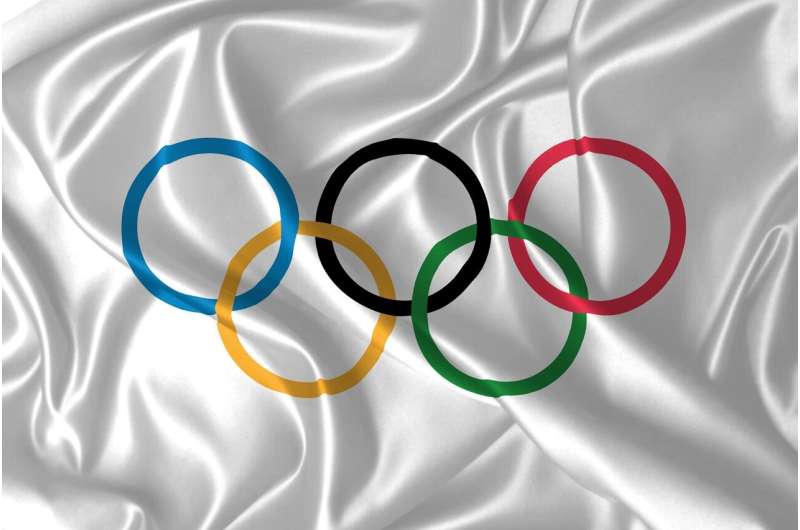Transgender athletes face an uncertain future at the Olympics as reactionary policies gain ground

At the last Summer Olympics held in Tokyo, New Zealand weightlifter Laurel Hubbard made history as the . American transgender and non-binary runner Nikki Hiltz , marking their Olympic debut.
But these two may be among the last transgender athletes to compete at the Olympics for some time due to a reactionary shift in sport policy stemming from conflicts over the participation of transgender women and girls in "female" sports.
While transgender people have gained some recognition and human rights in the past decade, a well-financed reactionary movement is rolling them back. A constellation of white supremacist, conservative and Christian fundamentalist groups and so-called "gender critical feminists" to traditional gender and sexual hierarchies.
These groups are targeting transgender women and girls specifically—more so than transmen and boys, and non-binary people—for surveillance and exclusion. Bills blocking transgender women and girls from participating in "female" sports have been passed in and .
Sport is a human right
The human right of transgender people to participate in all aspects of society—although far from universally affirmed and experienced—is often limited by that suppose men and boys have an athletic advantage.
The debate over the inclusion of transwomen in sports involves questioning . These concerns presume transgender athletes have an unfair advantage in women's competitions because of the apparent lasting effects of testosterone exposure.
Current female eligibility policies for both transwomen and women with higher levels of testosterone than the so-called norm are based on . These claims purport that higher average levels of testosterone among people assigned male at birth give them an unfair advantage.
From 2011 to 2021, elite and amateur sporting organizations like the International Olympic Committee (IOC) and the International Amateur Athletic Federation (IAAF)—now World Athletics (WA)—, despite its flawed science.
The assumptions about binary sex difference and female inferiority that motivate and animate female eligibility policies have been put under the microscope by human rights and science-based challenges, with the overwhelming consensus that and sex testing is flawed.
Mandatory sex testing for women athletes was and , but . Selective sex testing and medical interventions .
Olympic policies
In November 2021, the IOC that relies on sport-by-sport, evidence-based decision-making to determine if transwomen have an apparent unfair advantage.
The new IOC policy refreshingly rules out medically unnecessary treatment and acknowledges the harms past regulations have had on women athletes. However, it abandons its responsibility to support the human rights of transgender and cisgender women athletes. Instead, it leaves individual sport organizations to do the dirty work of drawing boundaries between "real" and "unreal" women and girls.
The harm such assessments will produce was foreshadowed by World Rugby's 2020 ban on transwomen participating in international women's rugby competitions. This ban was based on the scientifically unsupported claim that transwomen retain vestigial strength that makes their participation unsafe for their cisgender counterparts.
by replacing their leading-edge with one that leaves the inclusion of transgender athletes in the hands of individual sport governing bodies.
The recent success of swimmer Lia Thomas, the , prompted the change. This led FINA, the international swimming body, to effectively . Only swimmers who transitioned before age 12 are permitted to compete in women's events.
Broader anti-trans campaigns
Efforts to ban transwomen who have gone through male puberty from women's sports are part of broader anti-trans campaigns that seek to deny transgender youth access to the gender-affirming health care—specifically hormone blockers—required to avoid an unwanted puberty.
and have banned, or are planning to ban, access to affirming health care for youth under 16. Transgender women and girls impacted by these bans will never be able to compete in women's sport. These laws and policies signal to transgender women and girls they are not welcome in sport, and their privacy will be violated if they attempt to participate.
This will particularly impact transgender women and girls who do not or cannot pass as cisgender—either because they choose not to access gender-affirming health care, because they cannot afford it or because they live in areas where it is banned for minors.
As a result, many transgender girls and young women wishing to compete in high school or youth sport may avoid participating in sport altogether. This gender panic has also had , subjecting them to anti-trans surveillance and harassment.
Conservative, anti-trans groups claim to be protecting sport for women and girls by banning the participation of transgender women and girls. However, their actions . What girls and women athletes need to thrive are well-funded and gender-equitable sporting spaces that include transgender women and girls.
Provided by The Conversation
This article is republished from under a Creative Commons license. Read the .![]()

















